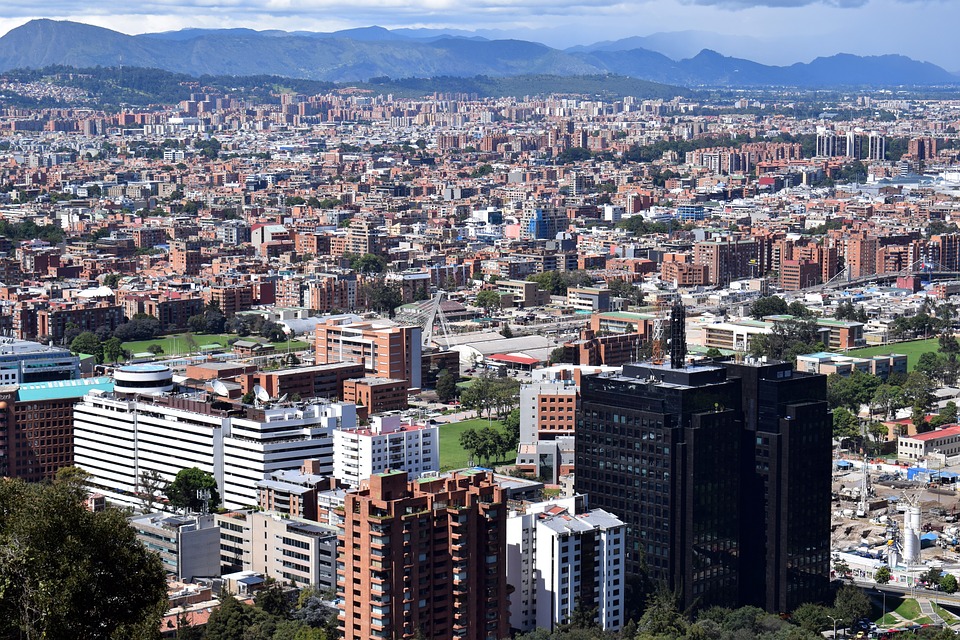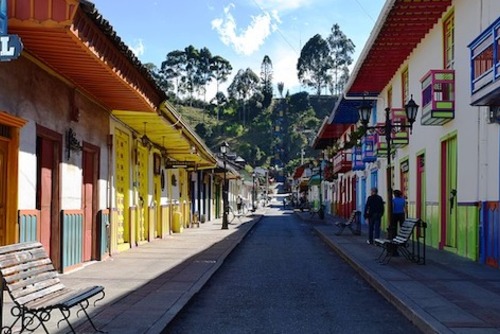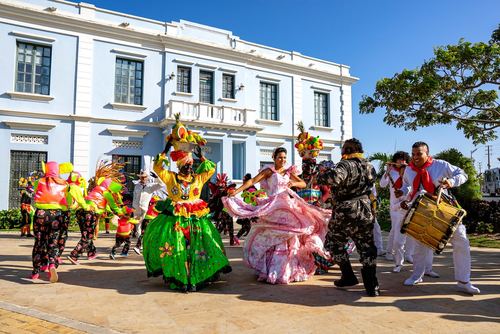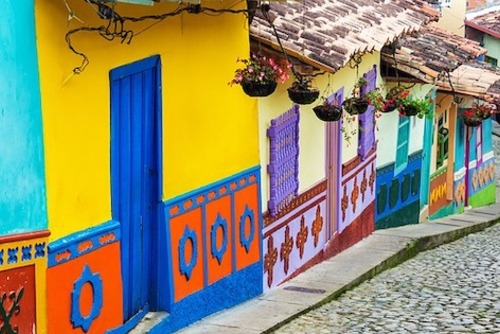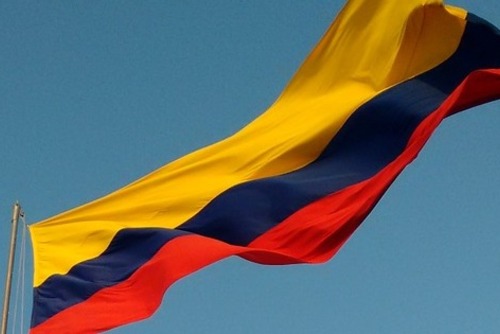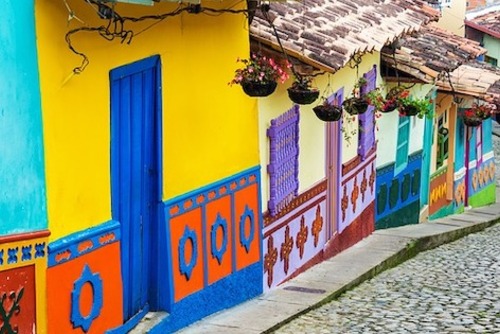This vibrant and diverse metropolis lies at approximately 2,600 metres altitude on a mountain plateau in the eastern mountains of the Andes.
It is a culturally and artistically rich city with lots to see and do in its unique blend of modern and colonial architecture. Home to over ten million, Bogota is an eclectic city and one not to miss on your South American travels.
However, despite great advances in recent years in the country of Colombia, this beautiful city is equally burdened by its reputation as one of the most dangerous to visit. And you are probably thinking is Bogota safe to visit, especially for female travellers?
Before you take the voyage to see all that Bogota has to offer, it is essential to do your research.
When in Bogota, follow these helpful hints and tips on how to stay safe when sightseeing and visiting the city.
1. Avoiding Street Crime
Street crime, particularly mugging and pickpocketing, is one of Bogota’s biggest problems .
Therefore, as a tourist always be aware of the threat; hold bags and personal possessions close to you when travelling on public transport, explore the city during daylight, remain in densely-populated areas and avoid troublesome neighbourhoods on the peripheries such as The Ciudad Bolivar.
Cerro de Montserrate and La Candelaria, two prominent tourist spots, have been known to be areas at a high risk of street crime. Therefore, always be wary of surroundings, plan your journeys before leaving accommodation, travel in groups, and take taxis if travelling late at night.
2. Hotel & Hostel Security
Accommodation is an important factor for any trip abroad. However, in Bogota being selective about accommodation is imperative given recent reports of attacks on hostels with armed gangs having broken into certain tourist accommodations.
Be sure to do your research before booking and find a hostel that has a good security record, good reviews and most importantly has introduced measures to combat this recent trend. The majority of attacks have taken place in La Candelaria so it is advisable to look for accommodation further north in regions such as Zona Rosa and Usaquen.
3. Don’t ‘Give Papaya’ – Keeping a Low Profile!
The Colombian phrase ‘no dar papaya’ which translates literally as ‘don’t give papaya’ means don’t make yourself an easy target. It sounds obvious but is something that is essential when visiting this dynamic city.
Avoiding deprived areas will obviously minimise the threat of being robbed but even in highly populated tourist areas in the centre of the city, it is essential that you do not present yourself as an easy target. Dress modestly, avoid designer labels and flashy jewellery, don’t carry expensive gadgets or large amounts of money, and always look like you know where you’re going (even if you don’t!). Before setting off, plan your journey; if lost, instead of pulling out a map, ask somebody official for help.
Additionally, be very wary when withdrawing money. ATMs are hotspots for thieves and also for express kidnapping attacks. Therefore, try to find indoor ATMs in malls or banks and only withdraw during the day when accompanied.
4. Transportation & Getting Around Bogata
Getting around Bogota is an experience in itself!
Official taxis are a safe, affordable and often the most convenient way to get around the city. Bogota boasts a very efficient and well-regulated taxi system using units to calculate fares (all meters should begin at 25 units). Also, if you do not speak Spanish this isn’t an issue as often the destination will suffice. There is also a new app, Tappsi, which is essential for hailing taxis in large Latin-American cities.
However, the most utilised mode of transport and best way to see the city is Bogota’s renowned TransMilenio. It is the city’s main public bus transit and it comprises of over 1500 buses, covering 112km, with 12 lines and 146 stations. It is by far the fastest, easiest and cheapest way to travel.
A TransMilenio reloadable card can be bought at any station (Tarjeta Cliente Frecuente is best for tourists) which provides access to nearly every station and SiTP bus. However, be wary of pickpockets that circulate on the TransMilenio.
Bogota also has an extensive network of privately owned buses and busetas which traverse the city. Nevertheless, you have to flag these down and signal to the driver when you want to stop which can be challenging for non-Spanish speakers.
One of the safest ways to naviagte the city and country is by booking a tour of Colombia. You'll get a local guide who will take you to the best locations and also travel in a group.
5. Know Your Destinations & Plan Your Visit
With so much to offer, you won’t run out of things to see and do in this diverse, energetic destination.
This is one of the best cities to visit in South America but it is essential that you make a list of your key destinations, plan how you will travel there, budget accordingly, and are aware of all precautions to take before visiting.
Here is a list of 10 of Bogota’s finest attractions to get you started:
- Museo del Oro
- Museo de Botero
- Cerro Monserrate
- Plaza Bolívar
- Bogotá Grafiti Tour
- Jardín Botánico de Bogotá
- La Candelaria
- Colombian coffee tour
- Laguna de Guatavita
- Santuario Nuestra Señora del Carmen
6. Learn Some Basic Spanish
Being able to communicate in the language will not prevent serious crime or threat but will inevitably make you feel more at ease and enable you to communicate with some confidence, and discourage others from taking advantage of you as a foreigner.
As a highly touristic city, you will find that at a lot of the key tourist destinations English will be spoken. Nevertheless, in other areas such as cafes, restaurants, and bars, being able to converse in Spanish will be hugely advantageous and often necessary.
So, in addition to the generic school-book Spanish ‘ ¿Dónde está …?/ por favor/ gracias’, here are some key typical Colombian Spanish phrases that’ll help you sound very authentic and help you ‘no dar papaya!’:
- Chévere! – cool/fun/great
- Bueno, bonito y barato- good, nice and cheap
- Aguanta – it’s okay (No aguanta- it’s not okay)
- Pilas – Watch out!
- ¿Qué más? – How are you (normally Cómo estás?)
- Listo – Ok/ ready/ done/ undertstood
- Rumba! – party!
- Bacano – Cool
- Dar papaya – Expose yourself to danger
- Auxilio – help
- Tinto – Coffee
- Que vaina – dire/terrible situation
Bogota is Safer Than You Might Think
Whether you are looking to go backpacking or take a gap year in Colombia, you need to add Bogota to your itinerary.
So, now you’re ‘Bogota-savvy’ and ready to enjoy all the city has to offer. Just be sure you take the necessary precautions, including consulting information on things such as entry requirements, information on passport regulations, and general information regarding safety and security.
Additionally, ensure you take out comprehensive medical and travel insurance before you travel and are aware of vaccinations and other health risks, as well as the official health advice before you travel.
If you’re abroad and you need emergency help from the UK government, contact the nearest British Embassy, consulate or high commission.
Make your experience unforgettable for the right reasons!
¡Pásalo bien!
¡Diviértete!
By Charlotte Daniels
Related Pages

